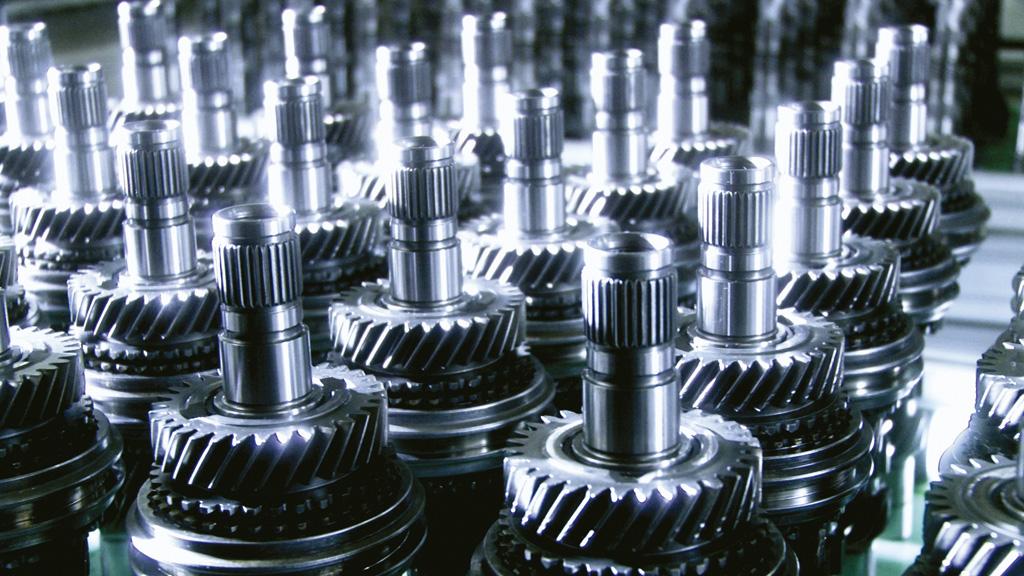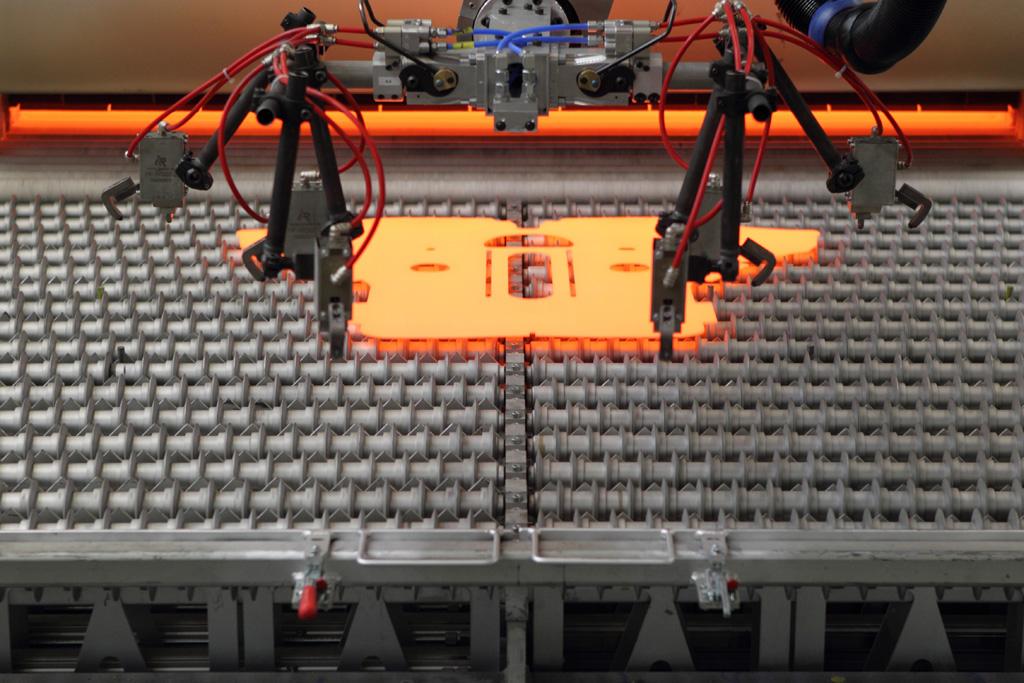Clean Cars are Good. Life Cycle Engineering is Better.
Volkswagen improves a car's environmental footprint from research to recycling.
Life Cycle Assessment reveals the quantitative variations in environmental impacts over the different phases of the vehicle’s life cycle. In the case of conventional petrol or diesel vehicles for example, it reveals that most CO2 – approximately three quarters – is emitted in the use phase. The fraction emitted at the manufacturing stage is much smaller.
In the case of water on the other hand, the picture is quite different. Even if it is regularly washed, the consumption of water during the vehicle’s useful life is very low. Most water is consumed at earlier stages in the life cycle.
Analyzing the life cycle environmental impact of a vehicle is a complex task. Data must be inventoried for all components and all processes in the production phase. Therefore data is drawn from the Volkswagen Material Information System (MISS) and external databases.
Volkswagen is now prepared using a Life Cycle Inventory IT tool. Fuel consumption and emissions during the use phase are calculated for the entire useful life of the vehicle, using the statutory New European Driving Cycle (NEDC). The inventoried data on emissions is classified into environmental impact categories. CO2 and methane for example contribute to the category “global warming”. The other environmental impact categories considered are photochemical ozone creation, acidification, ozone depletion and eutrophication potential.
The Life Cycle Assessment is carried out in strict compliance with the ISO 14040 and 14044 international standards on Life Cycle Assessments. It allows the company to identify the most ecologically advantageous solutions at an early stage. By the Life Cycle Assessment, development work can then be geared to achieving the greatest possible environmental benefits over the entire life cycle of the product.
In 2013, the Corporate Working Group “Life Cycle Engineering” was set up. Experts from the brands are working to harmonize the guidelines and methodology for Life Cycle Assessments across the entire Group and to support best practice-sharing among successful Life Cycle Engineering projects.
More on Volkswagen's Interpretation of Product Responsibility
In 2013, the Center of Automotive Management (CAM) and audit firm PricewaterhouseCoopers (PwC) named the Volkswagen Group the world’s most innovative automobile manufacturer, for the third consecutive year, based on an independent analysis carried out by CAM and PwC. Volkswagen also achieved the best ratings in the “conventional powertrain”, “alternative powertrain” and “information and communication systems” categories.
All over the world, some 40,000 Volkswagen Group engineers are working on the innovations of tomorrow. We believe that offering our customers a wide range of efficient, affordable and practical powertrain and fuel technologies in order to reduce climate risks is the right way forward, although this approach requires extensive innovation and investment. The strategic framework for our product development work is provided by three key objectives from the Volkswagen Group’s environmental management system – climate protection, resource conservation and healthcare.
In 2013, the Volkswagen Group spent approximately €10.2 billion on research and development. Over the coming five years, further investment of €84.2 billion in developing new models, environmentally friendly drive technologies and optimized production processes is planned.
Our aim is to be the world leader in electric mobility by 2018. We are working intensively on solutions that range from highly efficient, eco-friendly diesel, petrol and natural gas engines to innovative hybrid drive systems and all-electric vehicles.
The study “Industrial R&D Investment Scorecard”, undertaken for the EU Commission, reveals that Volkswagen is investing more in research and development than any other company in the world. The study compared the research and development expenditure of 2,000 international companies from a range of different sectors. Our research and development centers include sites in Wolfsburg (Germany), Anchieta (Brazil), Changchun and Shanghai (China) and Puebla (Mexico). Besides we cooperate in some cases with universities and research institutes. In July 2013, the Volkswagen brand and the Fraunhofer Institute for Machine Tools and Forming Technology (IWU) presented the findings of their joint research project “Innovation Alliance Green Carbody Technologies” InnoCaT®, under which Volkswagen and more than 60 partners, led by the IWU, developed innovative solutions for future car body production processes. The German Federal Ministry of Education and Research (BMBF) contributed €15 million of funding towards this project.
More on Volkswagen's Stance on Recycling
New Volkswagen vehicles contain around one third recycled material. At our Pamplona plant, as part of the “Think Blue. Factory.” program, research is underway to analyze waste-producing processes and devise new procedures. Adhesive residues, paint sludge and wastewater have already been successfully reduced. In this way, waste volumes at the site have been cut by more than 60% since 2010.
The Volkswagen brand’s sites in Kassel (Germany) and Dalian (China) use a high-quality industrial process to remanufacture replacement parts such as engines and gearboxes, restoring them to as-new condition. Producing a remanufactured gearbox, for example, uses one third less primary energy than manufacturing a new one.
Since the Genuine Remanufactured Parts Program was launched in 1947, some 7.9 million engines, 2.9 million gearboxes and more than 78 million other vehicle components have been given a new lease of life. The benefit for customers is that genuine remanufactured parts are, on average, 40% cheaper than their new counterparts, yet offer the same quality, functionality and manufacturer’s warranty. As well as benefiting customers, this program is also good news for the environment: in the case of engines, for example, up to 70% of materials are reusable. So remanufacturing engines alone saves around 7,000 t of steel per annum. 85% of each new vehicle can be recycled and 95% recovered. New Volkswagen vehicles currently contain around one third recycled material. Take the Golf 7, for example: a certified calculation method computes the share of recycled material at between 34 and 35%.
One Example for development of cutting-edge recycling technologies for end-of-life vehicles and their parts include the patented, multiple award-winning VW SiCon technique for processing shredder residues, and the LithoRec research project on the recycling of lithium-ion batteries from electric vehicles.
Volkswagen do Brasil has collaborated with universities and suppliers to develop a technique for processing natural curaua fibers for use in the production of door trim and parcel shelves. Recycled PET can also be used as a plastic in vehicles.
Read the 1st Volkswagen Sustainability Report highlight on renewable energy
Read the 2nd Volkswagen Sustainability Report highlight on solar power
Read the 3rd Volkswagen Sustainability Report highlight on water protection
Read the 4th Volkswagen Sustainability Report highlight on Brazil
Read the 5th Volkswagen Sustainability Report highlight on eco-friendly production
Read the 6th Volkswagen Sustainability Report highlight on people





